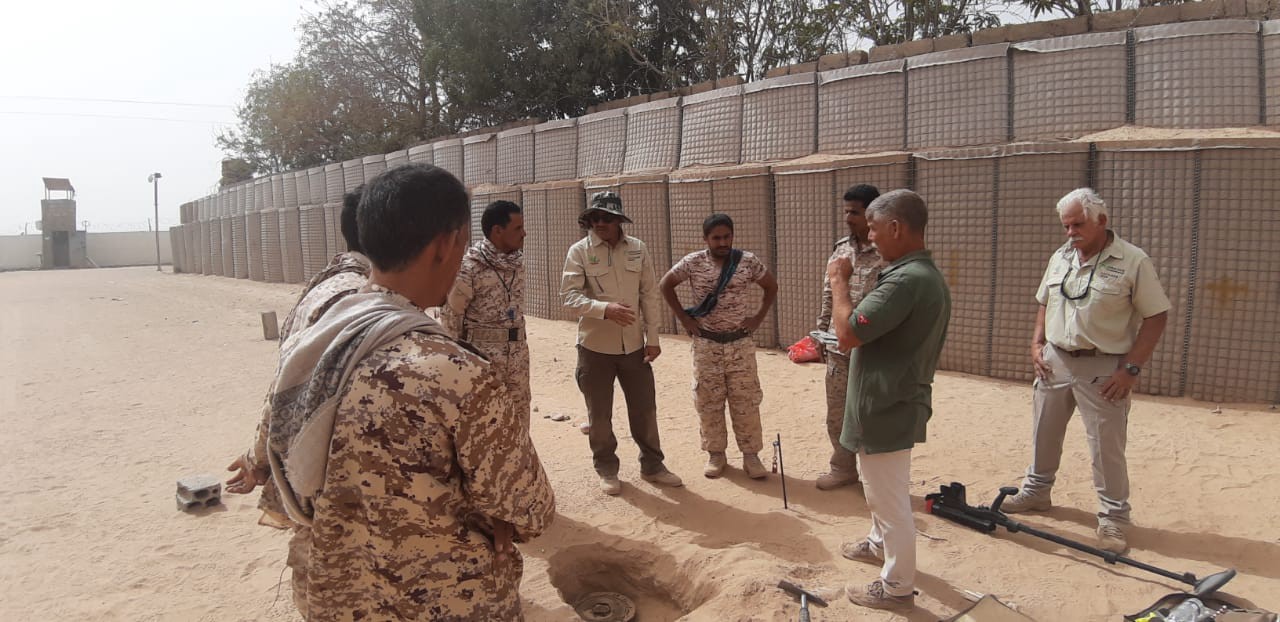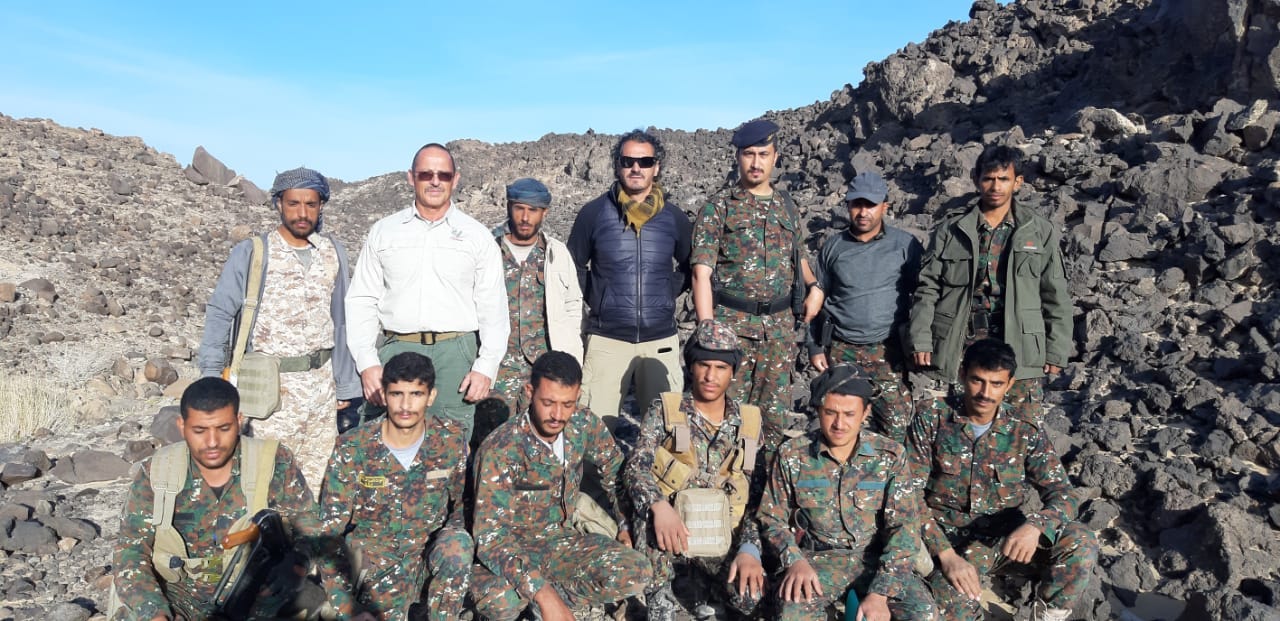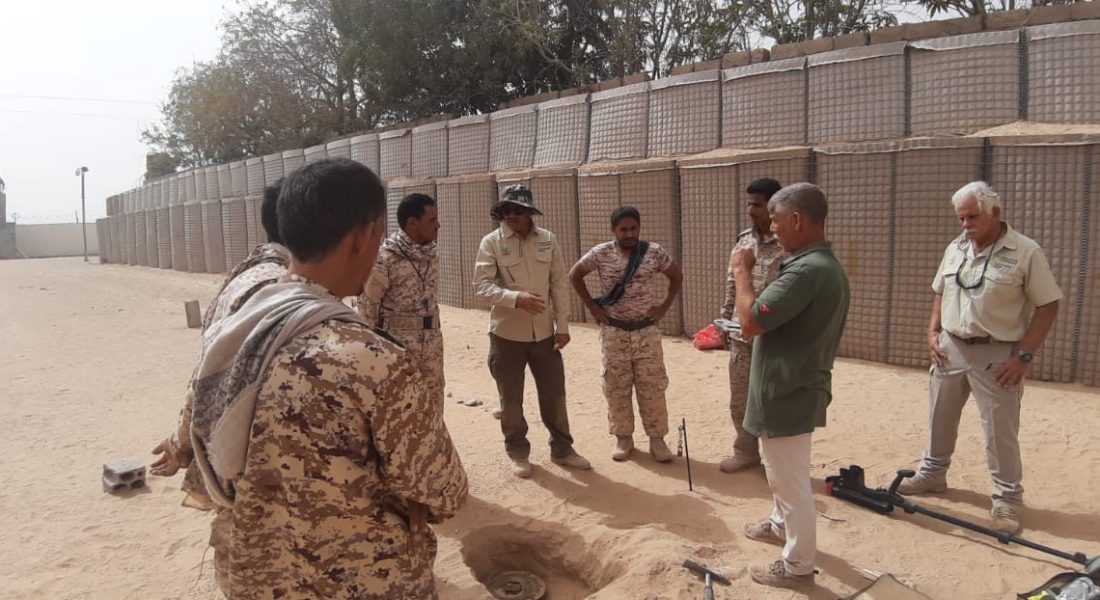
Translators and interpreters have a crucial role to play in the context of humanitarian demining.
With the support of these linguistic experts with in-depth mine action knowledge, we are able to communicate with our local Yemeni deminers, local government and authorities, and educate the local population about the risks of landmines and other explosive threats.
Last week, we attended one of Project Masam’s ongoing Interpreter Terminology Training. Masam’s team of interpreters first received terminology training when Masam opened its Aden headquarters when they joined the project, and have continued to receive a series of presentations, discussions and question-and-answer sessions on technical terminology since June 2021.
One of Masam’s Improvised Explosive Device (IED) Threat Officers explained this year’s training is aimed at providing interpreters with a greater breadth and depth of knowledge in munitions, explosives and improvised explosive devices.
“This is being conducted to improve their interpretation skills, which will hopefully make them more effective at helping our Technical Advisors when conversing with any local personnel, be it Masam deminers, Yemen Executive Mine Action Centre (YEMAC) staff, civilian authorities, etc.”
The objective of this training is to aid this team interpreting for Masam Technical Advisors during visits with the teams in the field and to discuss the ongoing operations, during continuation training and other briefings to Masam local national staff, between expat staff and local authorities, including YEMAC personnel.
“Our interpreters are learning new terms, words and phrases that allow them to be more effective with their technical language and descriptions in the above situations. It is also helping them to share the local Yemeni terminology, that is often used by our demining teams, and is allowing Masam to build up a record of these local terms, alongside their English translation, as well as the English terminology and suitable Arabic technical translations,” the IED Threat Officer said from Aden.
“This record of terms will hopefully make the future indoctrination of new interpreter staff a smoother process and can also be used as a reference guide for our current interpreters to use in their day-to-day duties.”
The continuous training has boosted interpreters’ self-confidence when interpreting discussions of a technical nature. The greater spectrum of technical language and terms is allowing them to differentiate between items that they couldn’t previously tell apart, or had misunderstood.
Interpreters are also beginning to see an improvement in the technical language used by the deminers, as the interpreters own expanded vocabulary is being incorporated and employed by others. This, they feel, is improving the accuracy of feedback and the conveyancing of messages.
“When discussing how to safely deal with explosive threats it is extremely important to be understood. Knowing that our interpreters receive training that enables them to accurately and effectively translate our Technical Advisors’ guidance and/or instructions, should give all Masam staff the confidence that our personnel are receiving the best available advice, in order to conduct Masam’s operations safely,” the IED Threat Officer said.
“A recent example was during a team visit when a local military camp commander came to the team’s location to express his support for the demining efforts. The commander enquired about the Houthi’s use of anti-personnel landmines and why they can inflict much more severe injuries than other anti-personnel mines.”
The interpreter recognised that the commander was talking about the Houthi’s improvised anti-personnel devices, which are based on the design of common military landmines but contain significantly more high-explosive, and that personnel knowledge of the threat allowed him to convey the question and answer much more effectively between the parties, the IED Threat Officer added.

In addition to the Interpreter Terminology Training, technical briefings are provided periodically for all Technical Advisors and others Operations personnel to ensure that Masam’s staff remain up-to-speed with the changing threat spectrum, in accordance with international standards.
Specifically, recent briefings have included new and emerging threats that the demining teams have started to encounter, or could potentially encounter in the future; and the evolution of the local threat picture, how these assessments could affect Project Masam’s movements and operations, and how Masam can adapt its procedures to mitigate these threats.
Since it first entered Yemen in mid-2018, Project Masam has located and destroyed 281,321 explosive devices, effectively clearing 27,199,867sqm of Yemeni liberated land. These include 4,151 banned anti-personnel mines, 93,890 anti-tank mines, 6,103 IEDs and 177,177 unexploded ordnance (UXO).
This article was first published on Medium.

